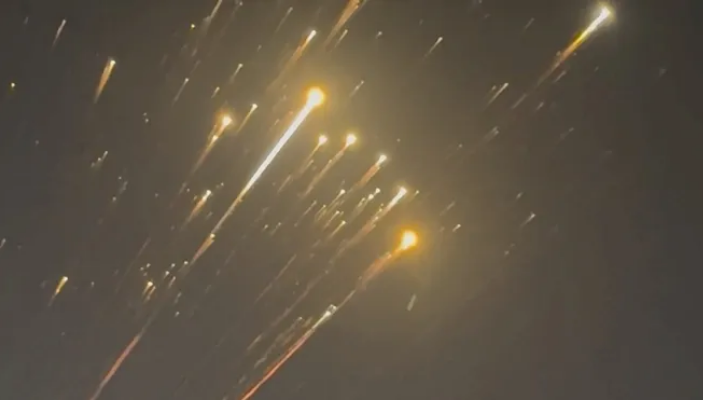On a clear morning, what was expected to be another milestone for SpaceX turned into a startling event when a Falcon 9 rocket exploded during testing. While no lives were lost, the incident drew intense attention from engineers, analysts, and space enthusiasts worldwide. This article offers a grounded, clear-eyed view of what happened, why it matters, and what comes next—without drama, hype, or clickbait.
What Actually Happened with the Falcon 9?
Event Summary
On the test pad at Cape Canaveral, a Falcon 9 booster was being prepared for a routine static fire—a standard procedure where the engines are ignited while the rocket is held down. Moments into this test, the rocket exploded, resulting in a fireball that destroyed both the launch vehicle and the payload it carried.
Timeline of the Incident
- Pre-launch preparations were normal up until 8:53 AM EDT.
- Explosion occurred at T-3 minutes, before engine ignition.
- Payload destroyed: A satellite intended for global internet service was also lost.
SpaceX later confirmed the issue happened during the fueling sequence, before any engine fire-up.
Engineering Factors Behind the Failure
What Caused the Explosion?
Preliminary investigations pointed to a breach in the helium system of the second stage. The helium is used to maintain pressure in the liquid oxygen tank. When that system fails, it can cause a rapid and uncontrolled reaction.
Key engineering terms involved:
- Cryogenic helium: Extremely cold gas under high pressure.
- Composite overwrapped pressure vessels (COPVs): High-performance tanks used to store helium.
When one of the COPVs failed due to unexpected friction or material stress, it led to a chain reaction resulting in the explosion.
Lessons Learned in System Design
SpaceX’s engineering approach relies heavily on iteration. This incident prompted a closer look at:
- Tank material compatibility
- Pressure sequences during fueling
- Real-time data monitoring enhancements
The company quickly adjusted its fueling procedure and refined the tank design.
Broader Impact on SpaceX and the Aerospace Sector
Operational Delays and Rescheduling
Following the explosion:
- All Falcon 9 launches were temporarily grounded.
- Multiple payload contracts faced delays.
- International partners reviewed safety protocols.
The grounding allowed for a full investigation, reaffirming that safety—despite pressure to launch frequently—is the cornerstone of any aerospace operation.
Financial and Reputational Considerations
Though damaging, the explosion did not sink investor or public confidence. SpaceX maintained transparency, sharing video footage, data reports, and investigation updates.
Why? Because transparency builds trust—even when things go wrong.
Resilience: How SpaceX Bounced Back
Updated Launch Protocols
After identifying fueling as a vulnerable phase, SpaceX implemented new protocols:
- Revised helium loading temperature and pressure
- More extensive stress testing on COPVs
- Redundant sensors to catch anomalies early
These upgrades were swiftly validated in subsequent successful launches.
Continued Innovation After Setbacks
Despite the setback, SpaceX proceeded with:
- Starlink satellite deployments
- Cargo missions to the ISS
- Development of Starship, its next-generation heavy-lift vehicle
Failures, while costly, remain integral to the iterative model SpaceX follows—each incident shapes safer and smarter engineering.
Why This Explosion Matters to Space Exploration
Reinforcing Safety Over Speed
The Falcon 9 explosion reminded the world that speed should never compromise safety in aerospace ventures. Each failure is not just a mishap—it’s data. That data fuels better designs, informed procedures, and improved training.
Transparency as a Model for Future Operators
SpaceX’s response has been referenced as a best practice in crisis communication. The emphasis on facts over speculation, openness over denial, and learning over blame set a professional standard that strengthens the entire spaceflight ecosystem.
Closing Thoughts
In aerospace, risk is a constant companion. The Falcon 9 explosion served as a hard but necessary reminder: innovation must be guided by data, responsibility, and a relentless focus on safety. SpaceX didn’t lose its footing; it sharpened it. Every explosion tells a story—this one’s about resilience, engineering growth, and the cost of going higher.
FAQs
1. Was anyone injured in the Falcon 9 explosion?
No, the incident occurred during a test sequence with no crew on board, and no injuries were reported.
2. What payload was lost during the explosion?
A communications satellite intended to provide internet coverage was destroyed along with the rocket.
3. What was the root technical issue?
A failure in a helium pressure tank component known as a COPV inside the second stage was the main cause.
4. Has SpaceX changed its processes since the incident?
Yes, they revised fueling procedures, updated tank materials, and improved real-time monitoring.
5. Did this incident delay future missions?
Yes, all Falcon 9 launches were temporarily paused, but SpaceX resumed operations within a few months after implementing fixes.

